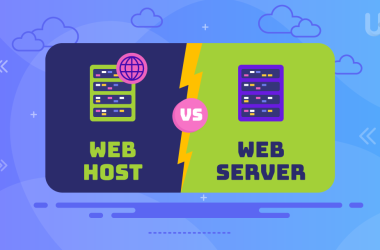Nowadays, there are endless options when it comes to website hosts and finding the right one is more important than ever.
You might want to consider offshore hosting, specialized hosting services for blogs, or video hosting sites. There really is a mind-boggling amount of choice out there.
No longer can you simply buy a domain name to set up your company website.
In many ways, this is a good thing. It means that you can find a web host optimized for the kind of site you want to run. However, it also means there are a lot more details for you to dig through. That’s why we have SLAs.
If you were to rent a house without reading the tenancy agreement, you might later discover that you’re responsible for dealing with subsidence or that the house isn’t wired for an internet connection. For all you know, the tenancy arrangement could stipulate that the landlord can place advertisement billboards in your front garden.
Essentially, you could be opening yourself up to all kinds of trouble and extra expense.
The same goes for signing a web hosting agreement without first reading the SLA. Failing to understand what kind of service your web hosting company provides could mean getting tied into low-quality service that does harm to your business.
So, let’s look at exactly what an SLA is, why they’re important, and some of the key things to prioritize when looking for the right one.
What is an SLA?
An SLA, or Service Level Agreement, is a contract that specifies what kind of services and features a customer can expect from a service provider.
These contractual agreements specify service details like cost, duration, guarantees, features of service, and what compensatory or punitive measures will be enacted in the case of a breach of said contract. In short, they state what requirements you and your service provider are bound to.
For web hosting agreements, the SLA should stipulate Mean Time Between Failures (MTBF), Mean Time To Repair or Recovery (MTTR), data rates, cached data storage, and other quantifiable factors. These factors can be standardized or personalized to a particular client’s needs. In either case, they should be mutually agreed upon after lengthy discussions.
Why are they important?
Choosing the right web hosting company is essential for businesses of any size. Your web host will be the one to ensure your website runs optimally and provides the features your company needs.
You may think that as long as your application has the right env file, it will be able to run on any website regardless of the host. This is not the case.
The way you’ll find out if your web host is capable of running certain applications is by reading the SLA. The SLA is where you’ll find out how your website will perform, how often it might fail, and what will happen when it does. So, it’s essential to read through and fully understand the SLA before signing a web hosting agreement.
It’s in the best interest for both the customer and the web hosting company to have an SLA set and agreed upon. By acting as proof of all the conditions to which each side is contractually obliged to comply, it removes any obscurity that might cause friction in the business relationship. As such, any legitimate web hosting company will be upfront about the SLA.
Key features of an SLA in web hosting
If this is your first time setting up a company website, it can be difficult to tell what your priorities should be when looking through an SLA. There are many types of SLA for many different industries, with a huge variety of clauses and features to look out for.
That said, there are some basic clauses that any web hosting SLA should have:
1. Uptime guarantee
Uptime is how long your website is available to its visitors on the internet. The SLA should specify the minimum uptime percentage that the hosting provider commits to.
It will usually be between 99.9% and 99.99%. It’s important to take note of this as uptime will often fall short of the agreed-upon threshold and when it does, you are entitled to compensation from the web host.
Also, uptime guarantee doesn’t account for network or server failures. This is downtime. So, your SLA should also specify how downtime is measured.
2. Response and repair time
The hosting provider’s response time to customer inquiries or technical support requests is one of the most important clauses of an SLA. It specifies how quickly you’ll receive help when you need it.
This could be for a general inquiry over your website’s performance or it could be a request for repairs when your website fails to load. In the latter case, you’ll want a fast response, so make sure you don’t overlook this.
Another thing to note is that SLAs will often offer different response and repair times depending on the severity of the issue. So, they may offer instant responses for inquiries but leave you hanging when it comes to serious repairs.
If there’s a section of the SLA discussing severity levels, check it carefully. Timeframes will usually be shown on an easily read graph.
3. Security measures
It’s vital to know what security measures are implemented by the hosting provider to protect customer data.
There will usually be a clause in your SLA discussing things like regular backups, firewalls, and intrusion detection systems. It may also define the responsibilities of the customer regarding security measures, such as keeping software up to date and using secure passwords.
Many web hosting companies will use remote access software for tech support. So, it’s a good idea to ask what security measures they will take to protect your company’s data. Without protection, providing remote access to your company’s website can leave you vulnerable to cyberthreats.
4. Maintenance windows
Maintenance windows are the scheduled periods during which the hosting provider can perform system updates or maintenance activities that may result in temporary service disruptions. The SLA should define the frequency, duration, and advance notice provided for such maintenance windows.
Essentially, you want your maintenance windows to be frequent enough that website performance doesn’t suffer, but not so frequent that it disrupts your business.
5. Data backup and recovery
These are the precautions taken for worst-case scenarios. Your web hosting company should backup important data and IT infrastructure regularly in case of data loss or system failures. The SLA will specify what responsibility your web hosting company takes for data retention and recovery.
You should also check what disaster recovery plans are outlined in your SLA. Specifically, you’ll want to know how long it will take to restore the functionality of your website.
6. Scalability and resource allocation
This relates to the availability of additional resources, such as CPU, memory, or storage, and how they’re allocated to the customer when needed.
Really, it will only be relevant if you intend to run a lot of different applications through your website; for a video hosting site for example. The SLA should clarify what additional resources are available and the process and timeframes for requesting resource upgrades.
A good question to ask here is what method your web hosting company uses for container orchestration.
Asking whether they use Kubernetes or alternatives to Kubernetes like PaaS solutions will give a clear indication of how well you can integrate key tools and applications into your website.
These advanced kinds of container orchestration help optimize resource allocation ensuring that applications have sufficient resources to operate without impacting other applications.
If your website requires advanced functionality or complex applications, such as running multiple JavaScript-intensive processes, it’s important to ensure that your web hosting provider can accommodate your needs. In such cases, you may need to hire JavaScript developers using recruitment automation software chosen based on reviews and ratings from aggregator sites like Find HR Software or utilize container orchestration solutions like Kubernetes to optimize resource allocation.
7. Service credits, compensation, and remedies
When your web hosting company fails to meet the agreed-upon levels of service, be that via excessive downtime or failure to meet performance metrics, you’re entitled to compensation.
This will either be in the form of credits or a refund. The SLA will outline what compensation you will receive in case of such SLA violations.
Another important thing to note is what eligibility criteria, calculation methods, and limitations for claiming such credits your web hosting company stipulates. Some may offer generous compensation but only in very specific circumstances or make it very difficult for you to apply for it.
Finding a web hosting agreement that works for you
SLAs for web hosting agreements can be full of jargon and reference technicalities of website performance that you might not be entirely familiar with. As such, properly understanding them can be a challenge. Don’t let this stop you from scouring yours before signing a web hosting agreement.
The hosting provider you choose will play a large part in determining the success or failure of your website. It’s crucial to understand exactly what sort of service your host can offer.
So, read through the SLA thoroughly, research the aspects you don’t understand, and if all else fails ask questions. Ultimately, a web hosting company will want to keep their customers happy. It’s in their best interest to provide you with all the help you need to feel comfortable signing on the dotted line.
Understanding the importance of Service Level Agreements (SLAs) is vital for anyone in the online world. At Ultahost, we not only value this significance but also deliver on our SLAs consistently. Your website’s performance and reliability are our top priorities. Choose Ultahost for hosting solutions that meet and exceed your expectations.











